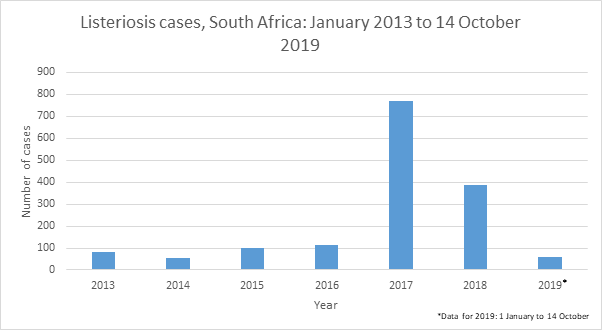There is no evidence of an outbreak of listeriosis.
The number of cases reported since the official end of the 2017/2018 listeriosis outbreak is well within (and in fact, below) the expected range for sporadic disease. Furthermore, there have been no unusual trends in the epidemiological patterns of disease, or in the whole genome sequencing analysis of isolates from patients; such data are analysed on an ongoing basis in order to detect possible clusters or outbreaks.
Listeria monocytogenes is ubiquitous in the environment, so it is likely that accidental contamination of food occurs fairly frequently, and that consumption of contaminated food may lead to listeriosis particularly in vulnerable people at high risk for disease.
Worldwide, most listeriosis cases are sporadic (i.e. isolated cases that are not linked to an outbreak, occurring predominantly in persons at high risk for disease), but occasional outbreaks do occur.
The population incidence of sporadic listeriosis ranges from 2 to 5 cases per 1 million population in the US, Europe, and Australia, where listeriosis has been under routine surveillance for many years and robust data is available.
With that in mind, at our current population size of 58.8 million, we would expect 117 to 294 sporadic cases in South Africa per year. Data for South Africa from 2013 show that prior to the 2017/2018 listeriosis outbreak, 55 to 113 cases per year were reported (see Figure below).

For the 12 months following the official end of the 2017/2018 outbreak (3 September 2018 – 18 September 2019), a total of 87 laboratory-confirmed listeriosis were reported. This is below the expected range. Outcome data is currently available for 77% (67/87) of cases, of which 31% (21/67) died. This is not unexpected, because listeriosis is a severe disease that targets vulnerable people at high risk and typically has a fatality rate of 20-30%.





